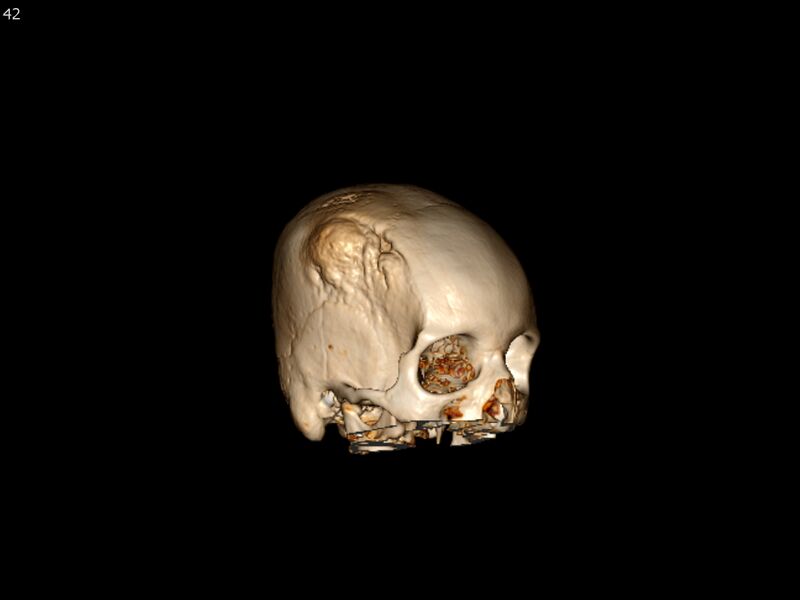File:Atypical meningioma - intraosseous (Radiopaedia 64915-73867 3D volume render 42).jpg
Jump to navigation
Jump to search

Size of this preview: 800 × 600 pixels. Other resolutions: 320 × 240 pixels | 640 × 480 pixels | 1,024 × 767 pixels | 1,280 × 959 pixels | 1,780 × 1,334 pixels.
Original file (1,780 × 1,334 pixels, file size: 199 KB, MIME type: image/jpeg)
Summary:
| Description |
|
| Date | 29 Jun 2019 |
| Source | Atypical meningioma - intraosseous |
| Author | Francis Deng |
| Permission (Permission-reusing-text) |
http://creativecommons.org/licenses/by-nc-sa/3.0/ |
Licensing:
Attribution-NonCommercial-ShareAlike 3.0 Unported (CC BY-NC-SA 3.0)
| This file is ineligible for copyright and therefore in the public domain, because it is a technical image created as part of a standard medical diagnostic procedure. No creative element rising above the threshold of originality was involved in its production.
|
File history
Click on a date/time to view the file as it appeared at that time.
| Date/Time | Thumbnail | Dimensions | User | Comment | |
|---|---|---|---|---|---|
| current | 02:31, 3 June 2021 |  | 1,780 × 1,334 (199 KB) | Fæ (talk | contribs) | Radiopaedia project rID:64915 (batch #3236-515 H42) |
You cannot overwrite this file.
File usage
The following page uses this file:
